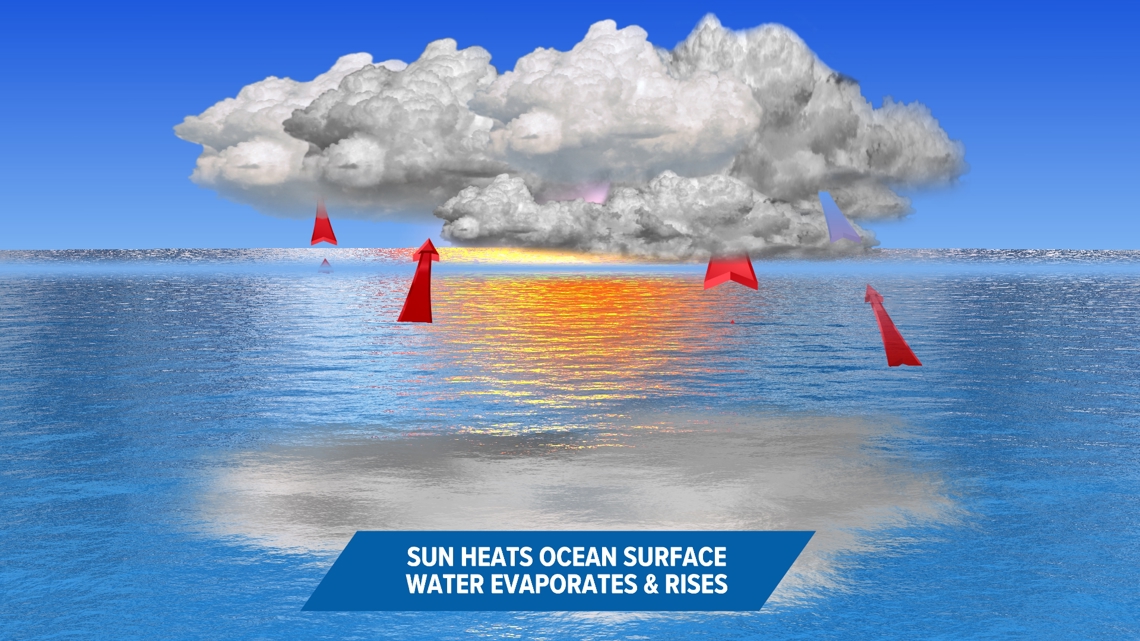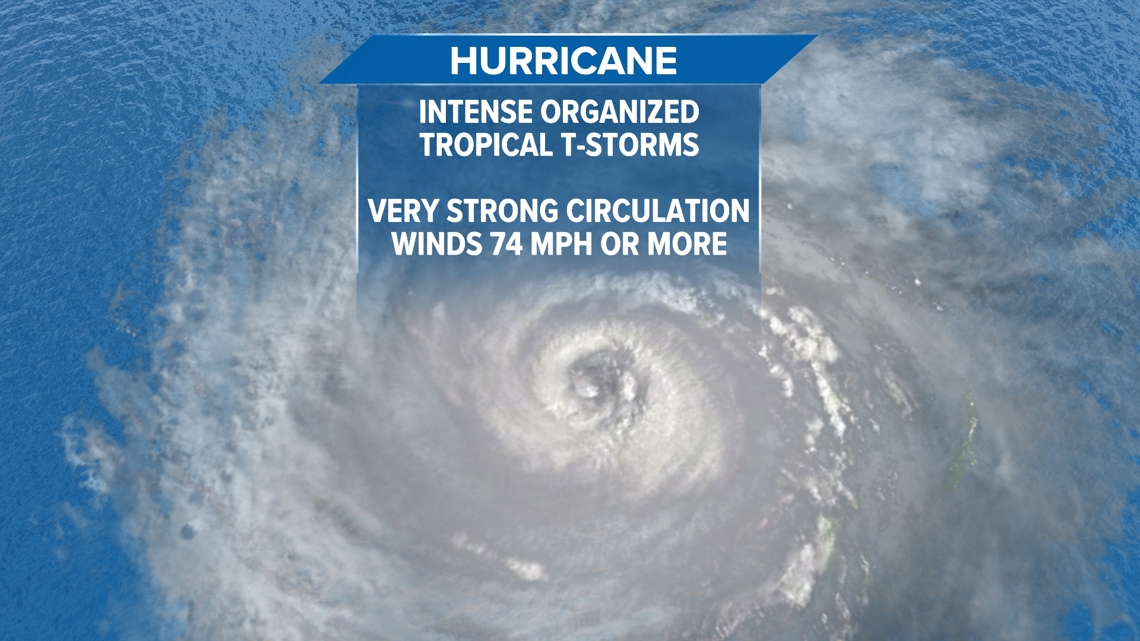NORFOLK, Va. — The 2024 hurricane season has been off to a record-breaking start, as Beryl became the earliest Category 4 and 5 hurricane to form on record. But what causes these systems to start in the first place and how can they become so strong?
For a hurricane to develop, there is usually a disturbance, such as a tropical wave or a low-pressure system. In Beryl's case, this started off as a tropical wave coming off the coast of Africa, which started moving west into the warm waters of the central Atlantic, also known as the "main development region."
This will provide the initial rotation and structure for the storm. As it continues to strengthen, it begins to draw in warm and moist air from the ocean surface, giving it the fuel it needs to grow.
Hurricanes normally develop in tropical regions where the sea surface temperature is at least 80 degrees, anything lower and there is not enough energy for the storms to develop. The warm ocean waters provide the energy needed for the storms to grow.
As the sun heats the ocean, it causes water to evaporate, creating moist, warm air above the surface which rises and leads to a low-pressure area.




As the warm air continues to rise, it cools and condenses to form clouds and eventually thunderstorms. Latent heat is released from this process which continues to warm the surrounding air, and the air starts to rise even more rapidly.
This cycle of rising warm air and falling cool air creates a pattern of convection which eventually will organize and start to rotate in a counterclockwise direction (clockwise in the southern hemisphere) due to the Coriolis effect, which comes from the Earth's rotation causing the air to spiral.
Once the tropical system gets a defined and closed low-pressure area, the National Hurricane Center will deem this a tropical depression with winds less than 38 miles per hour.
The depression continues to receive energy from the warm waters, it will get stronger and eventually become a tropical storm, which then becomes a named system. Tropical storms have wind speeds from 39 to 73 miles per hour and any stronger than that, it becomes a hurricane with winds normally ranging from 74 miles per hour (category one) up to 157+ mph, which would be considered a Category 5 hurricane.


There are a few things that will hinder a tropical cyclone's opportunity to grow.
For example, wind shear (changes in wind speed and direction with height) must be low for a tropical system to form and strengthen. High wind shear can disrupt the organization of the storm and prevent it from developing.
When all the conditions come together, the storm can develop into a large and powerful hurricane, most recognized by an eye in the center of a storm and the rainbands spiraling around the system.

